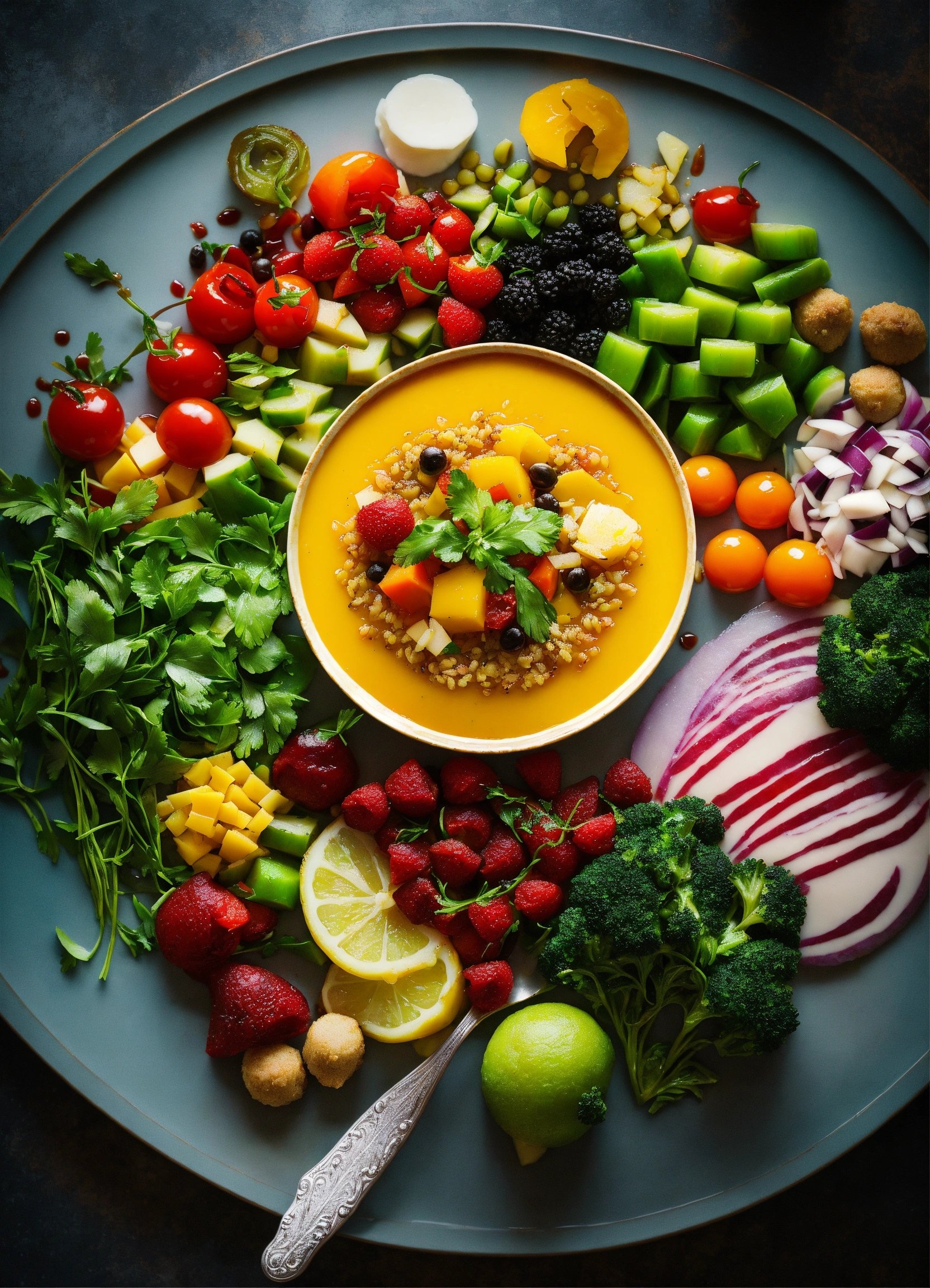Healthy
Healthy Eating on a Budget: Tips and Tricks for Affordable Nutritious Meals

Eating a healthy and nutritious diet is essential for overall well-being, but many people often believe that eating healthy is expensive. However, with some planning and smart shopping strategies, it is possible to eat healthy on a budget. Here are some tips and tricks for affordable nutritious meals.
1. Plan your meals: Before heading to the grocery store, plan out your meals for the week. This will help you avoid impulse purchases and ensure that you are buying only what you need. Look for recipes that use affordable and seasonal ingredients to help keep costs down.
2. Buy in bulk: Buying items like beans, rice, and oats in bulk can save you money in the long run. These items are not only affordable but also versatile and packed with nutrients. You can also buy frozen fruits and vegetables in bulk, which are often cheaper than fresh produce and can be just as nutritious.
3. Cook at home: Eating out at restaurants or ordering takeout can be expensive and often less healthy than cooking at home. By preparing your meals at home, you can control the ingredients and portion sizes, which can help you save money and eat healthier.
4. Shop sales and use coupons: Keep an eye out for sales and coupons at your local grocery store. Stock up on items that are on sale and freeze them for later use. Also, consider shopping at discount stores or buying generic brands to save money on groceries.
5. Include plant-based proteins: Plant-based proteins like beans, lentils, tofu, and chickpeas are affordable and nutritious alternatives to meat. Incorporating these protein sources into your meals can help save money while still meeting your nutritional needs.
6. Utilize leftovers: Don’t let leftovers go to waste. Instead, repurpose them into new meals or pack them for lunch the next day. This can help you save time and money by reducing food waste.
7. Grow your own produce: If you have the space and resources, consider starting a small garden to grow your own fruits and vegetables. This can be a cost-effective way to enjoy fresh produce and add variety to your meals.
By following these tips and tricks, you can enjoy healthy and nutritious meals on a budget. Remember that eating healthy doesn’t have to break the bank – with some planning and creativity, you can nourish your body and wallet at the same time.
Healthy
How to Build a Balanced Plate: Tips for Incorporating More Healthy Options
Eating a balanced diet is crucial for maintaining good health and preventing chronic diseases. One way to ensure you are getting the nutrients your body needs is by building a balanced plate at each meal. A balanced plate should include a variety of nutrient-dense foods from all food groups, such as fruits, vegetables, whole grains, lean proteins, and healthy fats.
Here are some tips for incorporating more healthy options into your meals and building a balanced plate:
1. Start with vegetables: Vegetables are packed with essential vitamins, minerals, and fiber. Aim to fill half of your plate with a variety of colorful vegetables, such as leafy greens, bell peppers, broccoli, carrots, and tomatoes. You can eat them raw, steamed, grilled, or roasted for added flavor and nutrients.
2. Add lean proteins: Protein is important for building and repairing tissues in the body. Choose sources of lean protein, such as chicken, turkey, fish, tofu, beans, lentils, and low-fat dairy products. Aim to include a palm-sized portion of protein on your plate.
3. Include whole grains: Whole grains are rich in fiber, which helps with digestion and keeps you feeling full. Choose whole grains like quinoa, brown rice, whole-wheat pasta, oats, barley, and whole-grain bread. These foods are also lower in calories and higher in nutrients compared to refined grains.
4. Don’t forget healthy fats: Healthy fats, such as avocado, nuts, seeds, and olive oil, are important for brain function, hormone production, and cell structure. Include a small amount of healthy fats on your plate to round out your meal and provide satiety.
5. Limit added sugars and processed foods: Try to reduce your intake of added sugars, sugary drinks, and processed foods high in unhealthy fats and sodium. These foods can contribute to weight gain, inflammation, and chronic diseases. Opt for whole, minimally processed foods whenever possible.
6. Drink plenty of water: Stay hydrated by drinking plenty of water throughout the day. Water is essential for digestion, absorption of nutrients, and overall health. Limit sugary drinks and opt for water, herbal tea, or infused water for added flavor.
Building a balanced plate may take some practice, but with time and consistency, it can become a habit. By following these tips and incorporating more healthy options into your meals, you can support your overall health and well-being. Remember to listen to your body’s hunger cues and adjust your portions accordingly. Consult with a registered dietitian or nutritionist for personalized guidance on building a balanced plate that meets your individual needs and goals.
Healthy
Why Choosing Healthy Options Can Improve Your Overall Well-being

In today’s fast-paced world, we often prioritize convenience and quick fixes over our health. Whether it’s grabbing a fast food meal on our way home from work or opting for sugary snacks to satisfy our cravings, our choices can have a significant impact on our overall well-being. However, making healthier choices can greatly improve our physical, mental, and emotional well-being.
One of the key reasons why choosing healthy options can improve our overall well-being is because it helps to maintain a balanced diet. A well-balanced diet provides our bodies with the essential nutrients it needs to function properly and stay healthy. Eating a variety of fruits, vegetables, whole grains, lean proteins, and healthy fats can help to prevent chronic diseases, boost our immune system, and improve our energy levels. On the other hand, consuming high-fat, high-sugar, and processed foods can lead to weight gain, fatigue, and a host of other health issues.
In addition to helping us maintain a healthy weight, choosing healthy options can also have a positive impact on our mental health. Research has shown that there is a strong link between diet and mental health, with certain nutrients playing a key role in improving mood, reducing anxiety, and combating depression. By fueling our bodies with nutrient-dense foods, we can support our brain health and enhance our overall mental well-being.
Moreover, opting for healthy options can help to improve our emotional well-being and self-esteem. When we make choices that align with our values and goals, we feel more empowered and in control of our lives. By prioritizing our health and well-being, we send a message to ourselves that we are worthy of self-care and self-love. This can boost our self-confidence and improve our overall sense of happiness and fulfillment.
In conclusion, choosing healthy options can significantly improve our overall well-being by providing our bodies with the necessary nutrients, supporting our mental health, and enhancing our emotional well-being. While it may require some effort and discipline, the long-term benefits of making healthier choices far outweigh the temporary satisfaction of indulging in unhealthy habits. By prioritizing our health and well-being, we can live our lives to the fullest and enjoy a happier, healthier future.
Healthy
Delicious and Nutritious: Healthy Meal Ideas for Every Day

Eating healthy doesn’t have to be boring or difficult. In fact, there are plenty of delicious and nutritious meal ideas that you can enjoy every day. With a little creativity and some simple ingredients, you can whip up meals that are not only good for you, but also satisfy your taste buds.
One of the keys to eating healthy is to focus on whole, unprocessed foods. This means incorporating plenty of fruits, vegetables, whole grains, lean proteins, and healthy fats into your diet. To help you get started, here are some healthy meal ideas that you can try out:
1. Breakfast – Start your day off right with a nutritious breakfast. Try a bowl of oatmeal topped with sliced bananas, nuts, and a drizzle of honey. Or make a smoothie with frozen berries, spinach, Greek yogurt, and a spoonful of almond butter.
2. Lunch – For a healthy and filling lunch, consider making a quinoa salad with cherry tomatoes, cucumbers, feta cheese, and a lemon vinaigrette. Or whip up a wrap with lean turkey, avocado, lettuce, and hummus.
3. Dinner – For dinner, try grilling some salmon and serving it with a side of roasted sweet potatoes and steamed broccoli. Or make a stir-fry with tofu, bell peppers, snap peas, and a ginger-soy sauce.
4. Snacks – Instead of reaching for processed snacks, opt for healthier options like sliced vegetables with hummus, Greek yogurt with a sprinkle of granola, or a handful of mixed nuts.
5. Dessert – You can still satisfy your sweet tooth with healthier dessert options. Try making a fruit salad with mixed berries, mango, and a dollop of Greek yogurt. Or bake some apple slices with cinnamon and a drizzle of honey.
Remember, eating healthy doesn’t mean sacrificing flavor or enjoyment. By incorporating a variety of nutrient-dense foods into your meals, you can nourish your body while still indulging in delicious dishes. So, next time you’re planning your meals, keep these healthy meal ideas in mind and get creative in the kitchen. Your body will thank you for it!
-

 Daily Lifestyle5 days ago
Daily Lifestyle5 days agoHealthy Eating Hacks for a Busy Daily Schedule
-

 Workout5 days ago
Workout5 days agoThe Ultimate Guide to Designing a Personalized Workout Routine
-

 Daily Lifestyle5 days ago
Daily Lifestyle5 days agoSimple Steps to Improve Your Daily Productivity
-

 Healthy5 days ago
Healthy5 days ago10 Healthy Alternatives to Junk Food for a Better Lifestyle
-

 Healthy5 days ago
Healthy5 days agoDelicious and Nutritious: Healthy Meal Ideas for Every Day
-

 Healthy5 days ago
Healthy5 days agoBoost Your Immunity with These Top Healthy Food Picks
-

 Workout5 days ago
Workout5 days ago10 Essential Elements of a Successful Workout Routine
-

 Daily Lifestyle5 days ago
Daily Lifestyle5 days ago7 Ways to Stay Active and Fit in Your Daily Life




